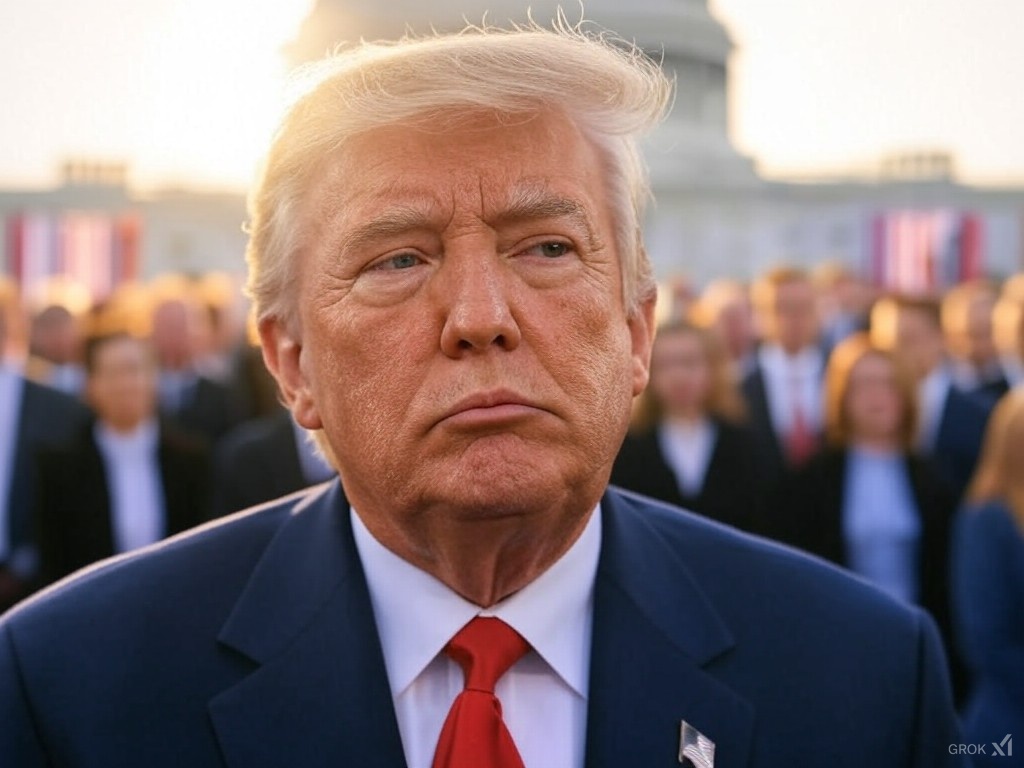
Amid currency realignments and BRICS defiance, Trump’s trade strategy creates clear corporate winners and losers—with ripple effects from Detroit to Delhi.
As President Trump’s second-term tariff regime enters its decisive phase, the global economic order is fracturing along predictable yet volatile lines. U.S. industrial giants like U.S. Steel and Nucor are riding a wave of protectionist-driven demand, while multinational automakers such as Toyota and BMW scramble to absorb punitive costs. Meanwhile, BRICS nations—spearheaded by China’s Sinopec and India’s Reliance Industries—are accelerating efforts to sideline the dollar, creating new risks for companies like Samsung Electronics and Ford that rely on traditional supply chains. The question is no longer whether Trump’s policies will reshape trade, but how deeply they will embed a corporate hierarchy defined by geopolitical loyalty.
Tariff Revenues Fuel Rust Belt Revival
The U.S. Treasury’s $180 billion tariff windfall has become a lifeline for domestic manufacturing, with U.S. Steel securing $3.2 billion in federal contracts to supply materials for bridge and rail projects across Ohio and Michigan. Nucor, bolstered by “Buy American” mandates, has expanded its Indiana sheet mill, adding 1,200 jobs. However, the euro’s 12% depreciation—a direct result of Trump’s pressure on the European Central Bank—has enabled Tesla to slash lithium import costs by 15%, accelerating its Texas Gigafactory output.
Yet the policy’s flipside is stark: Toyota, reliant on Mexican assembly lines for 40% of its North American sales, now faces 25% tariffs on cross-border shipments. The automaker has paused construction of a $1.3 billion Guanajuato plant, redirecting funds to costlier U.S. facilities. Similarly, BMW’s Spartanburg, South Carolina plant—once a model of globalization—is struggling to offset tariffs on German-made components, with margins shrinking 8% this quarter.
Political Impacts: Defense Deals and Reluctant Concessions
Trump’s “security-for-tariffs” bargaining has propelled Lockheed Martin and Raytheon into unexpected commercial booms. Germany’s agreement to purchase $6 billion in F-35 jets spared Volkswagen from auto tariffs but triggered a 14% drop in EU market share as French rivals Renault and Stellantis undercut prices. Siemens Energy, caught in the crossfire, lost a $9 billion contract to supply turbines to Saudi Arabia after Berlin capitulated to U.S. demands to curb exports—a void quickly filled by China’s Shanghai Electric.
In Asia, Samsung Electronics faces a dual crisis: BRICS-aligned tech firms now demand 30% of component payments in yuan, forcing costly currency hedges, while U.S. sanctions on advanced chip exports to China have disrupted its Xi’an semiconductor plant. The South Korean conglomerate has shifted $4 billion in investment to Vietnam, where VinFast is emerging as a proxy battleground. The EV startup, backed by Hanoi, is expanding its North Carolina factory to comply with U.S. local-content rules while securing yuan loans from BRICS banks for Indonesian nickel mining.
Economic Impacts: Divergent Fortunes in Energy and Tech
The energy sector epitomizes the global split. Sinopec and Petrobras now price 45% of oil exports in yuan, drawing Saudi Aramco into a pilot program for a digital currency settlement system. This shift has eroded demand for dollar-denominated crude, pressuring U.S. shale firms like ExxonMobil to accept a 12% discount on Asian shipments. Meanwhile, Reliance Industries has partnered with Russia’s Rosneft to bypass sanctions, funneling discounted Urals crude to Indian refineries in yuan—a deal that has boosted Reliance’s margins by 18% but isolated it from European markets.
In tech, Ford and General Motors warn of worsening chip shortages as Taiwanese and Korean suppliers prioritize BYD and Tata Motors, which dominate BRICS markets. Intel, once a leader in Asian semiconductor sales, has pivoted to U.S. government-backed projects, winning a $2 billion Defense Department contract for advanced AI chips.
Economic Outlook: BRICS’ Counterplay and Corporate Dilemmas
The BRICS bloc’s Moscow summit in October 2025 is poised to escalate financial hostilities. Leaked drafts of a “Bretton Woods II” framework reveal plans for a gold-backed digital currency, with China Construction Bank and Gazprombank piloting transactions in energy and metals. Goldman Sachs analysts note a 300% surge in BRICS corporate bond issuances bypassing Western markets, with entities like Adani Green Energy and South Africa’s Sasol raising $14 billion in Shanghai this quarter alone.
For U.S. firms, the stakes are rising. General Dynamics and Raytheon may thrive on defense deals, but Apple and Microsoft face exclusion from BRICS digital infrastructure projects. Even Tesla isn’t immune: its Shanghai Gigafactory risks losing subsidies unless it accepts partial yuan revenue settlements.
What’s Next?
Two developments loom large: Trump’s pending deal with Saudi Arabia to price oil in a dollar-yuan basket, which could stabilize energy markets or fracture them further, and the BRICS digital currency rollout, which targets SWIFT’s 70% dominance in cross-border payments.
Regional Spotlight: Southeast Asia’s Corporate Tightrope
In Thailand, state-owned PTT Group faces investor backlash over plans to split LNG exports between dollar-dependent Japanese buyers and BRICS-aligned partners in Bangladesh. Meanwhile, Indonesia’s PT Freeport risks U.S. sanctions after agreeing to sell 15% of its copper output to China’s Jiangxi Copper in yuan—a move that highlights the region’s precarious balancing act.



